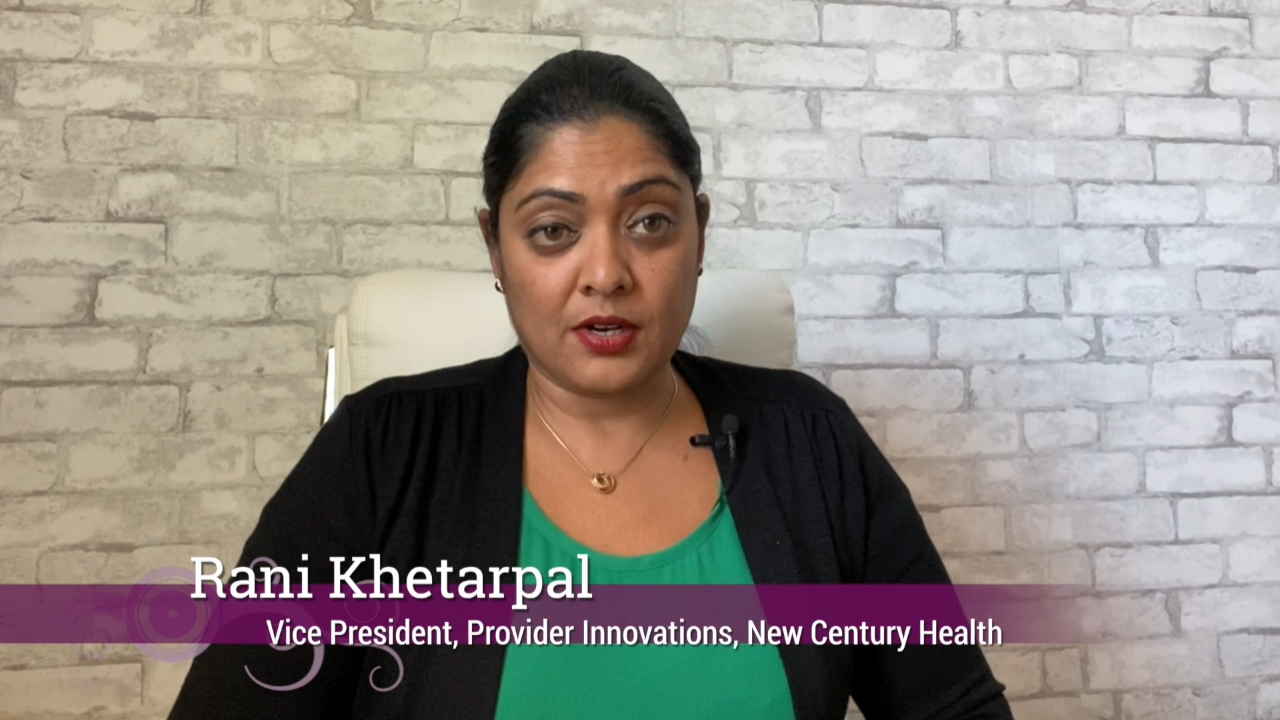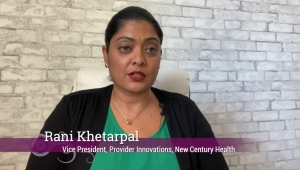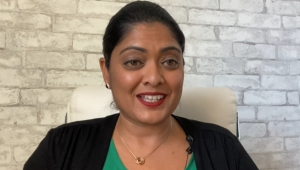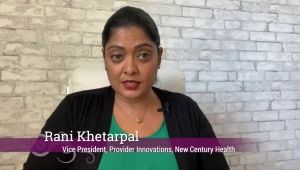It is hard to fathom that, according to the National Cancer Institute, more than 1.6 million people—a staggering number—are newly diagnosed with cancer annually.1 One of the greatest risk factors for cancer is age, and 60% of patients with cancer are aged ≥65 years.1,2 This means that at least 60% of patients with cancer and cancer survivors are most likely Medicare beneficiaries. In this population, age ≥65 years is typically associated with other comorbidities, which can lead to polypharmacy, as well as many other physical and cognitive impairments that can affect the logistics of treatment.
Because of our aging population and the preponderance of cancer in that group, it is important that care management be rendered before, during, and after treatment. Patients aged >65 years often require an increased number of resources, services, and assistance.
With all these factors in mind, the Centers for Medicare & Medicaid Services (CMS) has developed a new payment and service delivery model in oncology—the Oncology Care Model (OCM)—to improve care quality and reduce the cost of specialty care. The OCM was developed by the Center for Medicare & Medicaid Innovation (CMMI), or Innovation Center, as part of the Affordable Care Act law. Congress created the Innovation Center to test innovative payment and service delivery models to reduce CMS expenditures and improve the quality of care administered to Medicare beneficiaries.
The OCM is modeled after CMS’s Comprehensive ESRD Care Model, which was launched last year to provide enhanced care to Medicare beneficiaries with end-stage renal disease. The OCM is an innovative multipayer model in which oncology practices enter into payment arrangements that assess financial and performance accountability across an episode of care, mostly in relation to the administration of chemotherapy to patients with cancer. Ultimately, the goal of the OCM is to improve care quality, with a greater emphasis on coordinated cancer care at a lower cost. The OCM is a 5-year model that was launched in the spring of 2016.
Sylvia Mathews Burwell, Secretary of Health & Human Services (HHS), was the impetus for this new program. She stated that there should be a “‘Better, Smarter, Healthier’ approach to improving our nation’s health care, setting clear, measurable goals and a timeline to move the Medicare program—and the health care system at large—toward paying providers based on the quality, rather than the quantity of care they give patients.”3
The Oncology Care Model
The OCM aligns financial incentives, including performance-based payments, to improve care coordination, the appropriateness of care, and access for beneficiaries who are undergoing chemotherapy. CMS believes that this model will improve health outcomes, produce higher-quality care, and lower costs.
“Financial incentives for appropriate care should reduce health care expenditures as participating practices address the complex care needs of the beneficiary population receiving chemotherapy treatment, increase their use of high value services, and decrease their use of unnecessary services,” according to CMS.3
Because 60% of patients with cancer are Medicare beneficiaries, the OCM pilot will target those who are receiving chemotherapy.3 The program will parse treatment and services into 6-month episodes, starting with the initiation of chemotherapy.
In addition to providing treatment, participating OCM practices must3:
- Provide the primary elements of patient navigation
- Document a care plan that includes the 13 components in the care management plan outlined in the 2013 Institute of Medicine (IOM) report, Delivering High-Quality Cancer Care: Charting a New Course for a System in Crisis
- Provide around-the-clock access to patients to a suitable clinician who has real-time access to the patient’s medical records
- Treat patients consistent with nationally recognized clinical guidelines
- Drive continuous quality improvement using data
- Use an Office of the National Coordinator for Health Information Technology–certified electronic health record, and attest to Stage 2 of meaningful use by the end of year 3 of the model.
Patients receiving cancer care, regardless of age, need extra care, resources, services, and advocacy, which in today’s healthcare environment are difficult to support financially. Many community and hospital-based practices’ staff members are stretched thin for resources and services because of cuts in reimbursement for drugs and services.
I applaud CMS for taking this step and starting with the most vulnerable population, but questions remain. CMMI was very willing to accommodate this interview, which I greatly appreciate; although the discussion below does not answer all the questions, it is a great start.
Q What was the motivation to launch the OCM, and is it truly focused on the community oncologist?
CMS spokesperson: CMS identified oncology as a complex, high-cost area of medicine that would benefit from the care coordination and enhanced services required by the OCM. The OCM will move oncology toward the HHS Secretary’s goals of better care, smarter spending, and healthier people.
A recent study has shown that 54% of oncology care for Medicare beneficiaries is provided by community oncologists; so, the involvement of community oncologists in OCM is critical to its success.4 In addition, OCM participants will also include a variety of other practice structures, encompassing the diversity of oncology care in the United States.
Q Oncology is complex and high cost, but how will adding nurse navigation and care coordination improve care and save money?
CMS spokesperson: Oncology care is complex and often fragmented, requiring the interaction of multiple subspecialists, sometimes on a continual basis, to achieve optimal results. Medicare beneficiaries often have difficulties with transportation, and all patients need help navigating the medical system during this very difficult time in their lives.
Patient navigation and care coordination are expected to result in fewer missed care visits, more visits where the patient’s records and scans are present at the appointment, and more visits where the patient’s problems are understood by the provider and are directly addressed. All these changes will result in more timely and efficient care so that the quality of care and its efficiency will improve.
Q What is the overarching goal and vision of the project?
CMS spokesperson: The overarching goal of OCM is to transform oncology practices and oncology care in the United States so that Medicare beneficiaries with cancer consistently receive patient-centered, high-quality care, and so they benefit from the care coordination and enhanced services required by the model.
The model includes other non-Medicare payers, which will increase the number of patients in an oncology practice who are receiving care under an alternative payment model. The inclusion of other payers will leverage the opportunity for practice transformation across the population, and will result in broader, high-quality oncology care systems.
Q Based on your answer, do you think there is a lack of consistent patient-focused, high-quality care in current community practices, and how will alternative payment models enhance consistent patient-centered and quality care?
CMS spokesperson: There is tremendous variation in practice quality across the United States, but almost all practices can become higher quality and more patient-focused. The OCM will increase patient-centered care and quality through its practice redesign requirements and its performance-based payments.
The practice redesign requirements require oncology practices to provide specified enhanced services, such as patient navigation, to qualify for the Monthly Enhanced Oncology Services payment. In addition, to the extent that the absence of quality and patient-centeredness lead to inefficient care, patient costs will rise and the performance-based payment will decrease. In other words, oncology practices are being incentivized to provide high-quality, efficient, patient-centered cancer care.
Q Could alternative payment methods, such as bundled payments, decrease quality and patient-centered care? If the dollars for the bundled payment are utilized all for treatment and follow-up, how will patients receive the supportive services they need, unless the bundled payment is only for medications, radiation, hormonal, immune therapies, and personalized treatment with follow-up?
CMS spokesperson: CMS strongly believes that small investments in supportive care services can lead to large savings in patient care costs. For example, an investment in physical therapy may prevent a catastrophic fall and a subsequent high-cost hospitalization. Appropriate nutrition counseling may keep the patient healthier and prevent hospitalizations. Providing transportation to get a patient to a scheduled clinic visit may prevent a much more costly emergency department visit later that day.
Q Is the timing of this project significant to other changes in payment and process by CMS?
CMS spokesperson: CMS recognizes that aligning financial incentives with practitioners, in conjunction with robust quality measures, is the best way to achieve the high-quality, high-value healthcare system we all desire. In that sense, OCM is similar to other CMS models, such as the Bundled Payments for Care Improvement and the Comprehensive Care for Joint Replacement.
Q I agree that this makes perfect sense, but how does CMS decide what are the best, high-quality and correct measures? In a 2014 article I wrote for Oncology Practice Management, “What Constitutes Good Oncology Care?,” I noted that there are no clear metrics—many good-intentioned organizations have tried, but no one has been able to capture what the patient feels is good quality of care.5 My research showed a focus on cleanliness and the long wait times in the office, treatment understanding, second opinions, getting it right the first time, symptom control, survivorship, and self-management. It may be difficult to create such metrics for programs: how will CMS develop these metrics?
CMS spokesperson: Almost all our quality measures are identical or derived from quality metrics proposed by organizations that are deeply involved in cancer care, and reflect a consensus about what elements of cancer care are important to measure.
The adoption of the 13-point IOM care plan will address many of the patient education issues you highlight. There will also be a patient survey that will focus on some of the important patient care issues you have underscored, and each oncology practice’s performance-based payment will be directly affected by its score on this survey.
Finally, OCM will monitor important clinical outcome measures, such as progression-free survival and overall survival, to ensure that this most important aspect of quality is preserved and improved.
Q Were you encouraged by the number of applications for oncology practices?
CMS spokesperson: CMS was pleased with the number and quality of the applications. The applications represent a geographically diverse group of oncology practices, encompassing a range of sizes and business models, such as independent, hospital-owned, hospital-affiliated, and academic medical centers, that will allow for a comprehensive and rigorous test of the model.
Q How do you expect the health plans and pharmaceutical companies to weigh into this process? Do you expect health plans to spend dollars on keeping the patient on a guideline, and to follow nurse navigation and coordination as an added incentive to the $160 that CMS is paying doctors? And do you believe that pharmaceutical companies should financially support the process and/or software and data analysis? Because $160 is nice, but it will not cover the navigation services that are needed for this population.
CMS spokesperson: Health plans are given latitude in designing their programs as long as the parameters of their programs reflect the general outlines of the OCM. We therefore expect that we will see many variations in how health plans choose to implement their version of the OCM. Pharmaceutical companies are not directly involved in the OCM, but it is clear from our discussions with them that they recognize the need to provide the high-value, patient-centered care that the OCM incentivizes.
Q What do you see as the value of nurse navigation and care coordination for the provider and the patient?
CMS spokesperson: Oncology care is complex, often requiring the efforts of a broad range of medical specialists. This puts a tremendous burden on Medicare beneficiaries, who often have additional health conditions. Nurse navigation and care coordination can help patients and families better connect with and understand the various components of their multidisciplinary care, and can improve quality and efficiency of care.
Q An educated consumer is a better consumer, especially in healthcare. Is it advantageous to explain the program to Medicare beneficiaries? Should Medicare beneficiaries be sent documentation on nurse navigation and coordination so they can better understand the service?
CMS spokesperson: CMS agrees strongly that communicating with our beneficiaries is critically important. All beneficiaries will receive a Beneficiary Notification Letter when they begin treatment at an OCM practice, and subsequent communications along the lines you have mentioned are planned.
Acknowledgments and Dedication
I want to thank the CMMI team for their attentiveness and for the conscientious nature in which they answered my questions. I would like to especially thank William C.F. Polglase, Media Relations Group, Office of Communications, CMS, for being so assiduous and gracious in responding to all my e-mails, deadlines, and questions.
I also want to thank Caris Health for their forward thinking and dedication to excellence in patient care.
Finally, this article is dedicated to the practices that have the forethought and the vision of working with us at Caris Health on the CMS OCM pilot. We will be changing the way cancer care is delivered to patients and families forever.
References
- National Cancer Institute. Cancer statistics. Updated March 14, 2016. www.cancer.gov/about-cancer/understanding/statistics. Accessed July 8, 2016.
- Cancer.Net. Aging and cancer. April 2016. www.cancer.net/navigating-cancer-care/older-adults/aging-and-cancer. Accessed July 8, 2016.
- Centers for Medicare & Medicaid Services. Oncology care model. Fact sheet. February 12, 2015. www.cms.gov/Newsroom/MediaReleaseDatabase/Fact-sheets/2015-Fact-sheets-items/2015-02-12.html. Accessed June 26, 2016.
- Gould B; for Community Oncology Alliance. Letter to Sylvia Burwell and Andy Slavitt. March 9, 2016. http://blog2.communityoncology.org/userfiles/76/file/0-68194700-1457531518.pdf. Accessed June 26, 2016.
- Riley SA. What constitutes good oncology care? Oncol Pract Manage. May 2014. http://oncpracticemanagement.com/issue-archive/2014/may-2014-vol-4-no-3/what-constitutes-good-oncology-care/. Accessed June 26, 2016.






